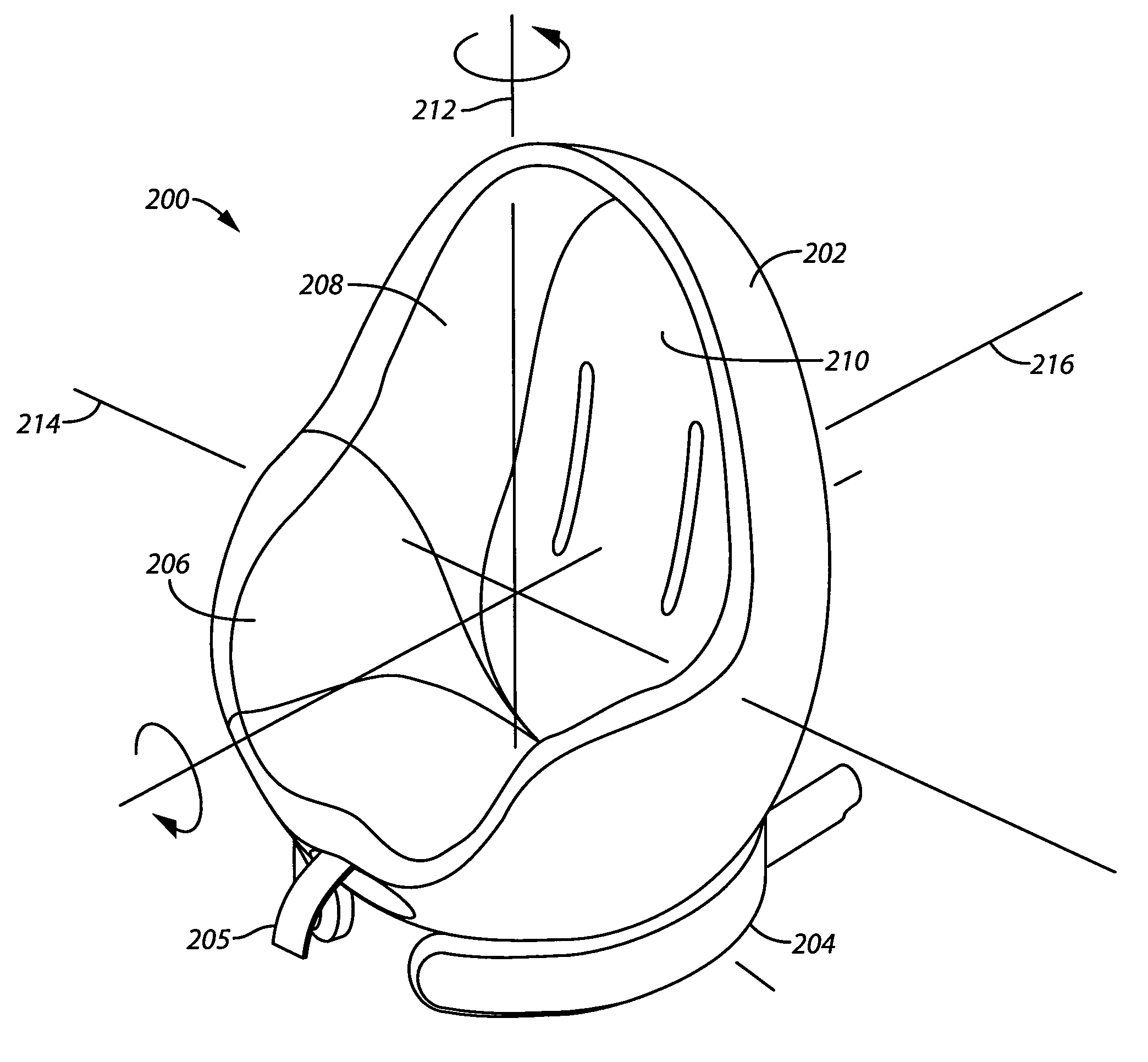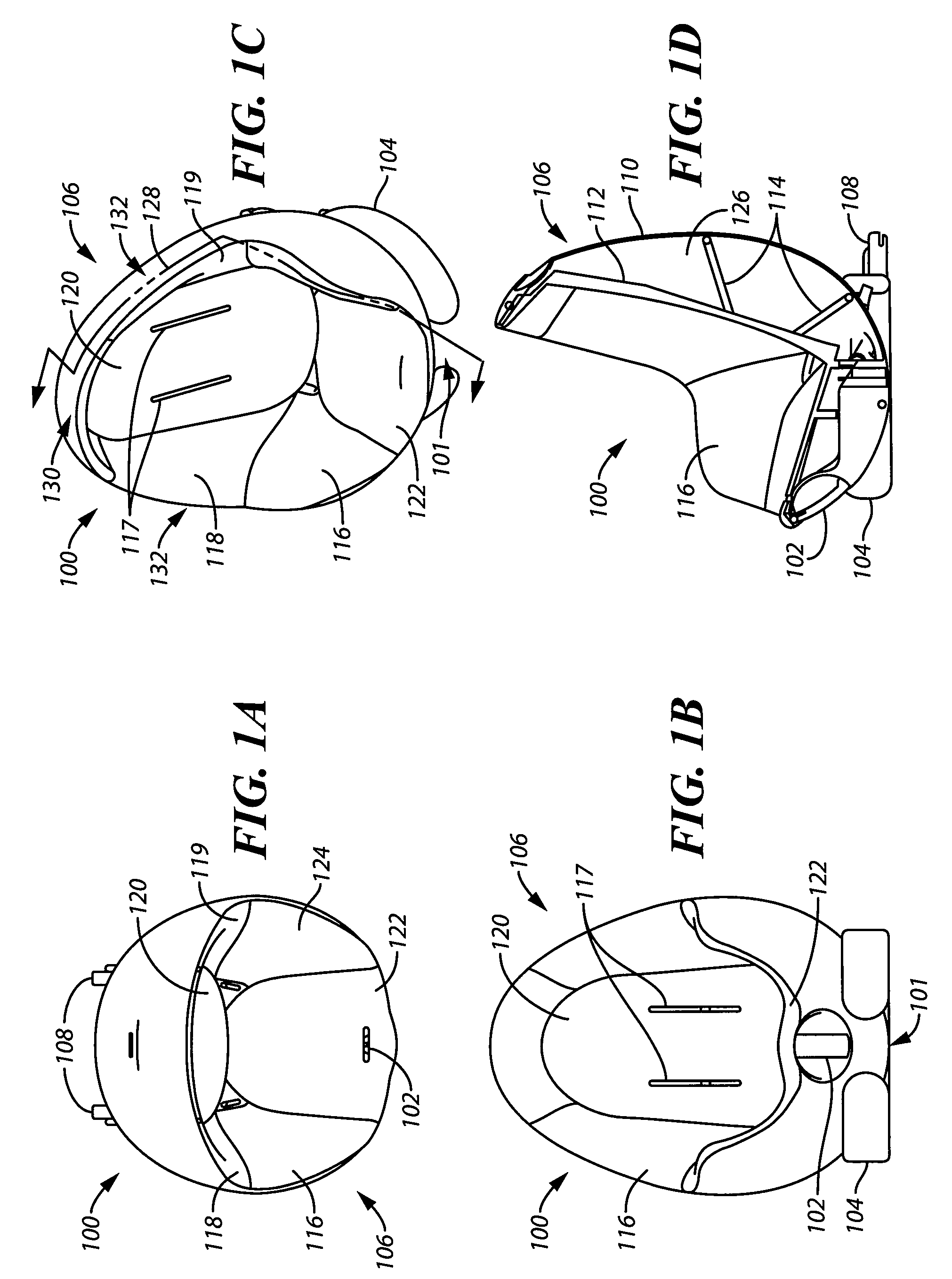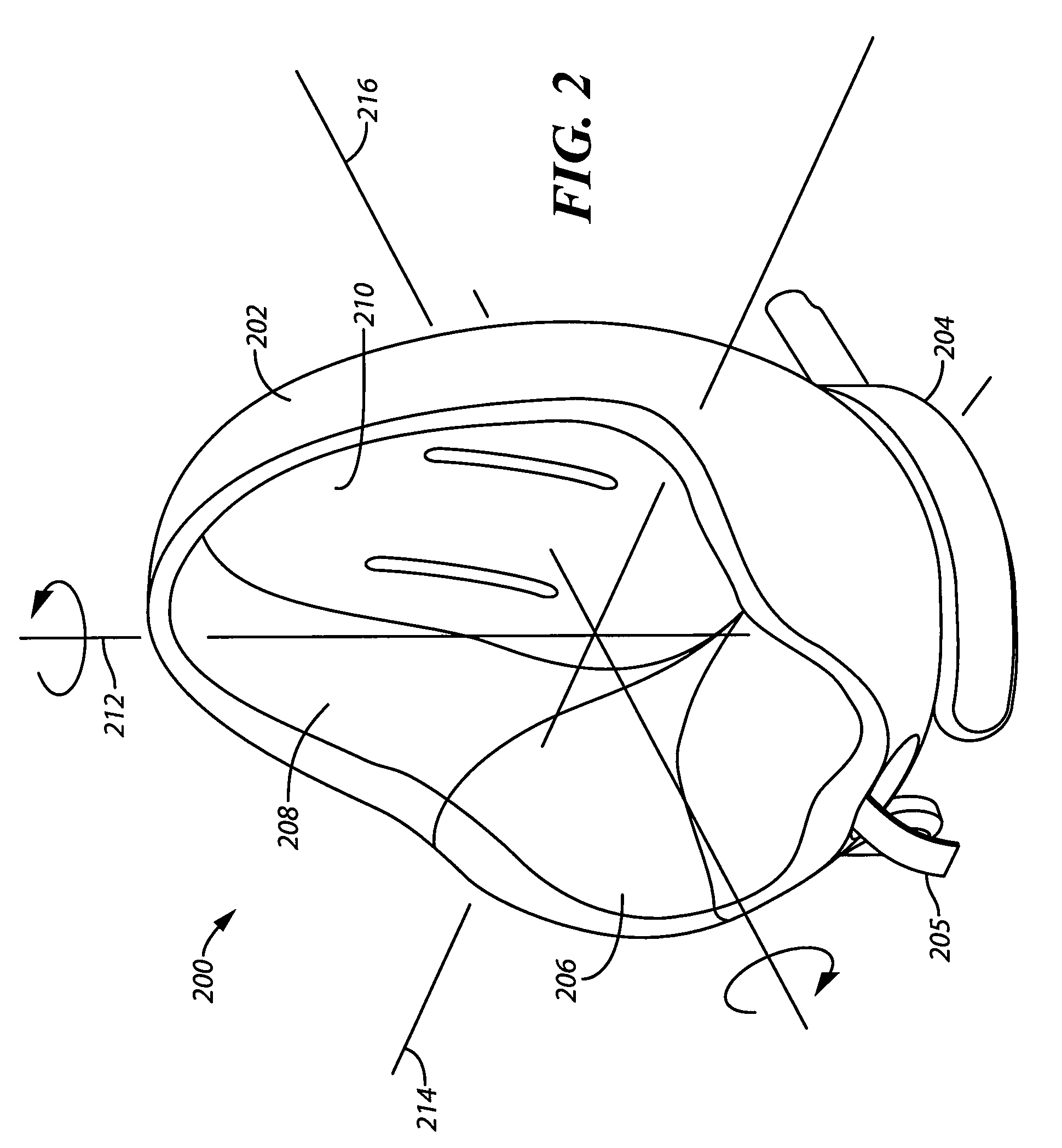Child seating system and method
- Summary
- Abstract
- Description
- Claims
- Application Information
AI Technical Summary
Benefits of technology
Problems solved by technology
Method used
Image
Examples
Embodiment Construction
[0047]Referring now to FIGS. 1a-d, one example of a child seating system 100 is described. In some of the examples described herein, the child seating system is described as being attached to a base with the whole arrangement (seat and base) being situated on and secured to the seat of a vehicle. However, in other examples, the child seat may be attached / incorporated into a stroller, a piece of furniture, or other types of devices. In still other examples, the base may be incorporated into the seat of the vehicle. Additionally, when used in a vehicle, the seat may be formed and configured to be used as an infant seat that is rear-facing. Other examples for placement and uses for the child seat are possible.
[0048]As shown in FIGS. 1a-d, the child seating system 100 includes a formed seat 106 and a base 104. In this example, the base 104 is secured to the top surface of a vehicle seat. However, as mentioned above, it will be appreciated that the base 104 can be incorporated into the v...
PUM
 Login to View More
Login to View More Abstract
Description
Claims
Application Information
 Login to View More
Login to View More - R&D
- Intellectual Property
- Life Sciences
- Materials
- Tech Scout
- Unparalleled Data Quality
- Higher Quality Content
- 60% Fewer Hallucinations
Browse by: Latest US Patents, China's latest patents, Technical Efficacy Thesaurus, Application Domain, Technology Topic, Popular Technical Reports.
© 2025 PatSnap. All rights reserved.Legal|Privacy policy|Modern Slavery Act Transparency Statement|Sitemap|About US| Contact US: help@patsnap.com



